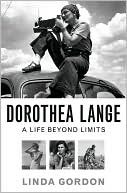Tina Modotti: Between Art and Revolution
A charismatic stage and screen actress. A model whose beauty inspired some of the most arresting images of the twentieth century. A visionary photographer. A revolutionary with deep commitments to communism. A lover of powerful men. A woman whose life -- and death -- were controversial. Tina Modotti (1896-1942) was all of these. Her life was one of almost unimaginable glamor, scandal, and turmoil. This is the first academic biography to portray Modotti accurately and fairly, cutting through...
Search in google:
A charismatic stage and screen actress. A model whose beauty inspired some of the most arresting images of the twentieth century. A visionary photographer. A revolutionary with deep commitments to communism. A lover of powerful men. A woman whose life -- and death -- were controversial. Tina Modotti (1896-1942) was all of these. Her life was one of almost unimaginable glamor, scandal, and turmoil. This is the first academic biography to portray Modotti accurately and fairly, cutting through the distortions of myth and rumor that surround her. Perhaps best known for her relationship as lover, model, and apprentice to American photographer Edward Weston, Modotti emerges as a complex woman, deeply passionate in her relationships as well as her art and politics. Historian Letizia Argenteri delves into an array of international historical documents and letters to follow the path of Modotti's life and career. Born in Italy, Modotti arrived in California as a teenager, becoming first a seamstress, then an actress. She took up photography after meeting Weston, moved to Mexico City, joined the Mexican Communist Party, and began taking social documentary photographs. She was deported in 1930 following the assassination of her lover, Julio Antonio Mella, exiled leader of the Cuban Communist Party, and after being accused of murdering the Mexican president, Pascual Ortiz Rubio. Modotti spent the rest of the decade working as a member of the Soviet communist party, between Moscow and Europe. After the Spanish Civil War, during which she was an organizer with Red Aid, she returned to Mexico illegally with her new companion, Spanish war hero Vittorio Vidali. She died there suddenly at the age of forty-six. Argenteri tells Modotti's dramatic story in full detail, casting light on the mysteries of her life and carefully placing her in the political and social milieu of her time.Publishers WeeklyImpatient with well-meaning but overly pious leftist and feminist accounts, historian Argenteri here looks to place Modotti (1896-1942) deeply within her social moment, and consequently devotes little direct attention to Modotti's famed modernist photographs. Though Argenteri covers far more, the bare facts include Modotti's 1913 emigration from Udine to San Francisco; her transformation from seamstress to a brief period as a stage and screen actress (playing Mexican women in two films); her time with artist-activist Robo de Richey that brought her into close and compelling contact with the cultural wing of Mexican communism; and her seven-year stint as the apprentice and lover of photographer Edward Weston in early 1920's Mexico, where Modotti did much of her major work. Modotti joined the Mexican Communist Party in 1927, and took up with Cuban revolutionary Julio Antonio Mella. When Mella was murdered, Modotti became a prime if implausible suspect; when the Mexican president was assassinated, she was accused and deported. In Moscow she fell in love with the Stalinist Vittorio Vidali, and in 1934 left with him for Spain. Throughout the Civil War, Modotti worked as a Red Aid nurse (she is the alleged model for Hemingway's Maria in For Whom the Bell Tolls), while Vidali executed those deemed a threat to the popular front. With the temperateness that characterizes her study, Italian scholar Argenteri assesses Modotti's oft-suppressed knowledge of these murders. Most sympathetically, she suggests that unlike Vidali and other comrades, Modotti never recovered from the shock of the failed Civil War. She returned to Mexico a weary refugee, and lived alone in a tiny house until her mysterious death in a taxi at age 46. While Octavio Paz claimed that Modotti belonged "'more to the history of passions than to the history of ideologies,'" Argenteri stresses her devotion to communism, a moveable cause more constant than any of her lovers but as fallibly human as all of them. A 60-page b&w photo insert shows Modotti at many stages of her life, along with some of her work. (July) Copyright 2003 Reed Business Information.
AcknowledgmentsPreface1Udine12America! America!123Enter Robo and an Acting Career274Mexico!455Edward Weston596The Party Calls777Persona Indesiderata1058The Camera as Comrade and Ally1299Expulsion13910Vittorio Vidali14911Maria16012The Return of the Mexican hija18213The End195Conclusion205Postscript209Notes213Selected Bibliography305Index318
\ Publishers WeeklyImpatient with well-meaning but overly pious leftist and feminist accounts, historian Argenteri here looks to place Modotti (1896-1942) deeply within her social moment, and consequently devotes little direct attention to Modotti's famed modernist photographs. Though Argenteri covers far more, the bare facts include Modotti's 1913 emigration from Udine to San Francisco; her transformation from seamstress to a brief period as a stage and screen actress (playing Mexican women in two films); her time with artist-activist Robo de Richey that brought her into close and compelling contact with the cultural wing of Mexican communism; and her seven-year stint as the apprentice and lover of photographer Edward Weston in early 1920's Mexico, where Modotti did much of her major work. Modotti joined the Mexican Communist Party in 1927, and took up with Cuban revolutionary Julio Antonio Mella. When Mella was murdered, Modotti became a prime if implausible suspect; when the Mexican president was assassinated, she was accused and deported. In Moscow she fell in love with the Stalinist Vittorio Vidali, and in 1934 left with him for Spain. Throughout the Civil War, Modotti worked as a Red Aid nurse (she is the alleged model for Hemingway's Maria in For Whom the Bell Tolls), while Vidali executed those deemed a threat to the popular front. With the temperateness that characterizes her study, Italian scholar Argenteri assesses Modotti's oft-suppressed knowledge of these murders. Most sympathetically, she suggests that unlike Vidali and other comrades, Modotti never recovered from the shock of the failed Civil War. She returned to Mexico a weary refugee, and lived alone in a tiny house until her mysterious death in a taxi at age 46. While Octavio Paz claimed that Modotti belonged "'more to the history of passions than to the history of ideologies,'" Argenteri stresses her devotion to communism, a moveable cause more constant than any of her lovers but as fallibly human as all of them. A 60-page b&w photo insert shows Modotti at many stages of her life, along with some of her work. (July) Copyright 2003 Reed Business Information.\ \ \ \ \ Library JournalTina Modotti's legacy is perhaps the most muddled of all the early 20th-century proto-feminists. Known best for her photographs of Mexican workers, her love affair with photographer Edward Weston, and her commitment to the Communist Party, Modotti (1896-1942) has been largely mythologized as a daring and ultimately self-destructive romantic. In the most comprehensive biography to date, Argenteri (history, San Diego Mesa Coll.) chooses merely to tell the details of Modotti's life, an invigorating approach that is accomplished with respect, authority, and ultimately great affection. This is most refreshing for Modotti fans, as much writing about her is tainted by the limits of each author's vision. An exception is Patricia Albers's Shadows, Fire, Snow, a good, more accessible companion to this work. Argenteri, who is multilingual, could read all but the Russian documents she unearthed, a remarkable feat when researching a subject so prone to wanderlust. An awestruck letter to Modotti is the historian's oddest contribution, but it does relate her struggle to grasp her elusive subject. Essential for comprehensive political history, large photography, and all women's history collections.-Rebecca Miller, "Library Journal" Copyright 2003 Reed Business Information.\ \








